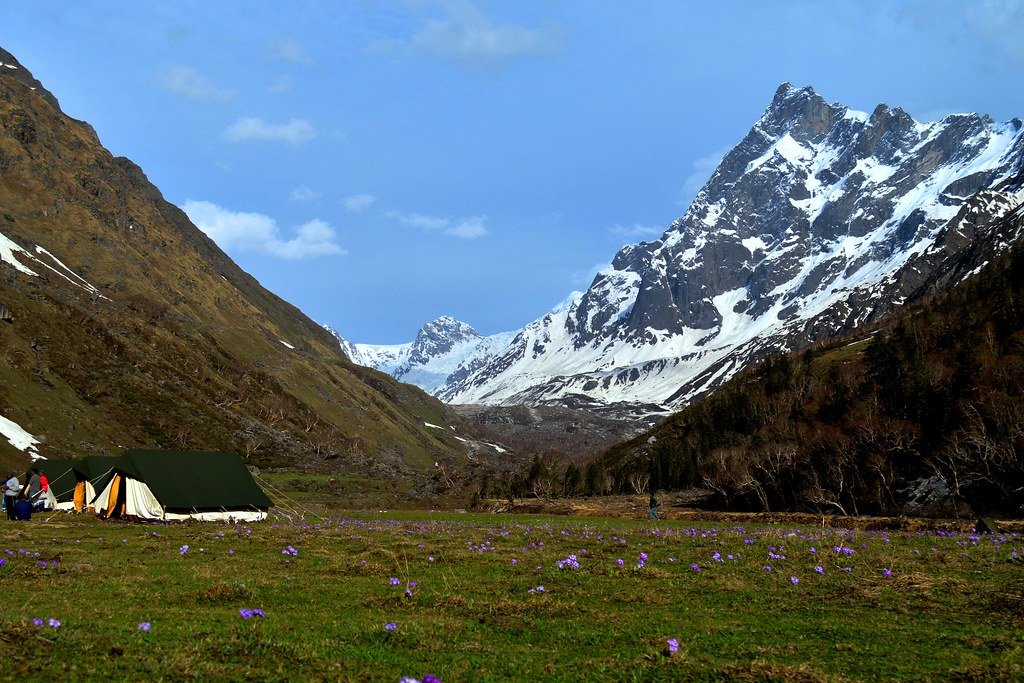Bhimbetka Rock Shelters – All You Need To Know | Best Time To Visit
Bhimbetka, a UNESCO World Heritage Site in Madhya Pradesh, India, is an archaeological wonder nestled in the Vindhya Range. With over 700 rock shelters, it preserves prehistoric cave paintings spanning Paleolithic to Mesolithic eras. Scenes of hunting, daily life, wildlife, and communal activities vividly adorn the shelters. Notable sites like Boat Rock and Zoo Rock showcase unique depictions. Bhimbetka provides invaluable insights into ancient civilizations, offering a captivating journey into the artistic expressions and lifestyles of our ancestors.

Opening hours – 7AM To 6PM
Entry fee : 10 Rs. for Indians and 100 Rs. for foreigners.
Bhimbetka Rock Shelters date back to the Paleolithic era and exhibit evidence of human habitation spanning thousands of years. Renowned for their prehistoric cave paintings. The paintings, depicting scenes of daily life, rituals, and wildlife, provide a fascinating glimpse into the cultural and artistic evolution of ancient human societies. The site is a treasure trove for archaeologists, historians, and art enthusiasts, offering a unique opportunity to connect with the rich history of human civilization.
1. Bhimbetka Rock Shelters :
The rock shelters and caves at Bhimbetka are significant archaeological sites providing evidence of human settlement and cultural evolution. They document the transition from hunter-gatherer lifestyles to agriculture and reflect prehistoric spirituality. Dating back to the Acheulian times of the Stone Age, these shelters served as homes, places of worship, and social gathering spots. Notably, some rock shelters feature prehistoric cave paintings dating to 10,000 BCE, showcasing themes like animals, early dance and hunting practices from the Stone Age, and later depictions of warriors on horseback, possibly from the Bronze Age. Bhimbetka holds the oldest-known rock art in India and stands as one of the country’s largest and most significant prehistoric complexes.
Here is a short poem about the Bhimbetka rock shelters:
The Bhimbetka rock shelters,
A place of ancient art,
Where humans lived and worshipped,
And painted from the heart.
The caves and rocks have stories,
Of life in days gone by,
Of hunters, dancers, warriors,
And creatures that could fly.
The oldest rock art in India,
Is found within these walls,
A testament to human life,
And how it still enthralls.
2. Paintings of Wild Animals:

3. Hunting Scenes:
The Bhimbetka caves feature prehistoric paintings dating back to around 10,000 BCE, portraying captivating hunting scenes. These artworks depict the hunting practices of early human communities during the Indian Mesolithic period, showcasing the artists’ skill in capturing the nuances of pursuit, cooperation, and hunting techniques. The scenes illustrate individuals engaged in tracking, trapping, and communal hunting, offering insights into the vital role of hunting in the daily lives and survival strategies of ancient inhabitants. Beyond their artistic value, these hunting scenes contribute to our understanding of the social dynamics, resource utilization, and cultural practices of the early communities in the Bhimbetka region.

4. Dance and Music Scenes:

5. War Scenes:

6. Domestic and Daily Life:
The Bhimbetka caves feature prehistoric paintings dating back to around 10,000 BCE, providing a vibrant portrayal of daily life and domestic activities of early human communities during the Indian Mesolithic period. These artworks capture scenes of cooking, communal gatherings, and routine tasks, offering insights into the social dynamics, familial bonds, and ordinary aspects of the lives of ancient inhabitants in the Bhimbetka region. The depictions contribute to a comprehensive understanding of the cultural and social fabric that characterized prehistoric communities in this area.

7. Boat Rock:
Boat Rock is a significant rock shelter in the Bhimbetka caves, adorned with prehistoric paintings dating back to around 10,000 BCE during the Indian Mesolithic period. Named for the depiction of a boat-like structure in the paintings, Boat Rock provides insights into the artistic expression and cultural nuances of early human communities. This shelter contributes to the archaeological significance of Bhimbetka, offering a glimpse into the creativity and symbolic representations that characterized the lives of ancient inhabitants in the region.
8. Zoo Rock:

9. Auditorium Rock:
10. Lakha Juar Complex:
The Lakha Juar Complex, part of the Bhimbetka caves, features numerous rock shelters with prehistoric paintings dating back to around 10,000 BCE. These artworks depict scenes of daily life, wildlife, and rituals, offering valuable insights into the cultural practices and societal dynamics of early human communities during the Indian Mesolithic period. The complex contributes significantly to Bhimbetka’s archaeological importance, providing a unique record of the diverse aspects of prehistoric life in the region.
11. Prehistoric Paintings Information Centre:
The Prehistoric Paintings Information Centre at Bhimbetka serves as an educational hub, offering detailed insights into the ancient rock art found in the caves. Through exhibits, multimedia presentations, and interpretive materials, the center enhances visitors’ understanding and appreciation of the cultural and archaeological significance of the prehistoric paintings in the Bhimbetka caves.
That’s all about the incredible Bhimbetka Rock Shelters. hope you like it. Have a safe journey!
Archeological And Historical Evidences Of Bhimbetka Caves
The Bhimbetka caves hold immense historical and archaeological significance, contributing crucial insights into the evolution of human civilization. Here are key aspects of their historical and archaeological importance:
- Ancient Art Repository:
- Bhimbetka is an extensive repository of ancient art, featuring over 700 rock shelters adorned with cave paintings. These artworks span across multiple historical periods, providing a visual record of prehistoric human life.
- Paleolithic and Mesolithic Art:
- The cave paintings at Bhimbetka cover a vast timespan, ranging from the Paleolithic era (approximately 30,000 years ago) to the Mesolithic era. This extensive timeline allows archaeologists to trace the progression of human culture, lifestyle, and artistic expression over millennia.
- Chronological Layers:
- The rock shelters exhibit distinct layers, each representing a different historical period. Archaeologists can study these layers to understand the chronological development of art and human activities, offering a unique glimpse into the changing dynamics of ancient societies.
- Insights into Daily Life:
- The cave paintings depict scenes of daily life, including hunting, dancing, music, communal gatherings, and domestic activities. These depictions provide valuable insights into the social, cultural, and economic aspects of prehistoric communities.
- Faunal Depictions:
- The vivid representations of fauna, such as elephants, tigers, bison, and deer, contribute to the understanding of the region’s biodiversity during ancient times. This information aids in reconstructing the ecological landscape of the past.
- Cultural Evolution:
- Bhimbetka’s archaeological findings offer a visual narrative of cultural evolution, showcasing the development of art, symbolism, and community practices over the ages. The artworks reflect the creativity, beliefs, and rituals of ancient inhabitants.
- Evidence of Human Occupation:
- Besides the cave paintings, Bhimbetka has yielded archaeological evidence of human occupation, including tools, artifacts, and remnants of ancient settlements. These findings contribute to our understanding of prehistoric lifestyles.
- UNESCO World Heritage Site:
- Designated as a UNESCO World Heritage Site in 2003, Bhimbetka is recognized globally for its outstanding universal value in preserving and showcasing the cultural heritage of humanity. The designation acknowledges its significance in understanding human history.
- Gateway to Indian Prehistory:
- Bhimbetka serves as a gateway to Indian prehistory, offering a unique window into the lives of early humans on the Indian subcontinent. It remains a focal point for researchers, historians, and archaeologists studying the roots of human civilization in South Asia.
- Preservation of Cultural Heritage:
- The conservation and protection of Bhimbetka are paramount to preserving the rich cultural heritage encapsulated within its rock shelters. Ongoing efforts ensure that future generations can continue to study and appreciate this archaeological treasure.
How To Reach Bhimbetka From Delhi
- By Train:
- Nearest Railway Station: Bhopal Junction
- Delhi to Bhopal Train Options: Several trains connect Delhi to Bhopal. Some popular ones include the Shatabdi Express and Bhopal Express.
- Travel Time: The train journey from Delhi to Bhopal takes approximately 8-10 hours.
Here Are Some Commonly Used Trains From Delhi To Bhopal:
| Train Name | Train No. | Departure from New Delhi | Arrival at Bhopal | Approximate Fare |
|---|---|---|---|---|
| Shatabdi Express | 12002/12001 | 6:00 AM | 1:30 PM | AC Chair Car – INR 1,200 to 1,500 |
| Bhopal Express | 12156/12155 | 17:00 PM | 07:35 AM | Sleeper Class – INR 400 to 500 |
| Habibganj Express | 12156/12155 | 7:50 AM | 03:00 PM | Sleeper Class – INR 400 to 500 |
- By Air:
- Nearest Airport: Raja Bhoj Airport, Bhopal
- Delhi to Bhopal Flights: Direct flights are available from Indira Gandhi International Airport (DEL) to Raja Bhoj Airport (BHO).
- Travel Time: The flight duration is approximately 1.5-2 hours.
- From Bhopal Airport to Bhimbetka: Bhimbetka is around 45 km from Bhopal. Taxis and buses are available for the onward journey.
- By Road:
- Distance: Bhimbetka is around 700 km from Delhi.
- Delhi to Bhimbetka by Road: You can hire a taxi or use bus services to reach Bhimbetka from Delhi. The journey takes approximately 12-14 hours by road.
Bhimbetka Was Discovered By
Bhimbetka was discovered by Dr. Vishnu Wakankar, an Indian archaeologist, in 1957. Dr. Wakankar’s exploration led to the recognition of the rich archaeological and cultural significance of the site, known for its prehistoric rock shelters and paintings dating back to the Paleolithic and Mesolithic periods.
Nearby Places To Visit At Bhimbetka Rock Shelters:
- Bhopal
- Bhojpur
- Sanchi
- Van Vihar National Park
Related Articles:
Places To Visit In Kushinagar | Things To Do | Top Tourist Attractions In Kushinagar
Places To Visit In Khajuraho | Best Time To Visit | Things To Do





